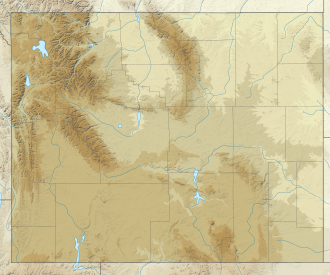| Cloud Peak Wilderness | |
|---|---|
 Cloud Peak Wilderness, as viewed from Freezout, off Cold Springs Road. | |
| Location | Johnson / Big Horn / Sheridan counties, Wyoming, USA |
| Nearest city | Sheridan, WY |
| Coordinates | 44°23′55″N107°12′07″W / 44.39861°N 107.20194°W |
| Area | 189,039 acres (765.01 km2) |
| Established | 1984 |
| Governing body | U.S. Forest Service |
The Cloud Peak Wilderness is located in north central Wyoming in the United States. Entirely within Bighorn National Forest, [2] the wilderness was established in 1984 in an effort to preserve the wildest section of the Bighorn Mountains. The wilderness has the highest peaks in the Bighorn Mountains including Cloud Peak and Black Tooth Mountain, as well as Cloud Peak Glacier, the only remaining active glacier in the Bighorn Mountains. The Cloud Peak Wilderness is 189,039 acres (765.01 km2).
Contents
U.S. Wilderness Areas do not allow motorized or mechanized vehicles, including bicycles. Although camping and fishing are allowed with proper permit, no roads or buildings are constructed and there is also no logging or mining, in compliance with the 1964 Wilderness Act. Wilderness areas within National Forests and Bureau of Land Management areas also allow hunting in season.

